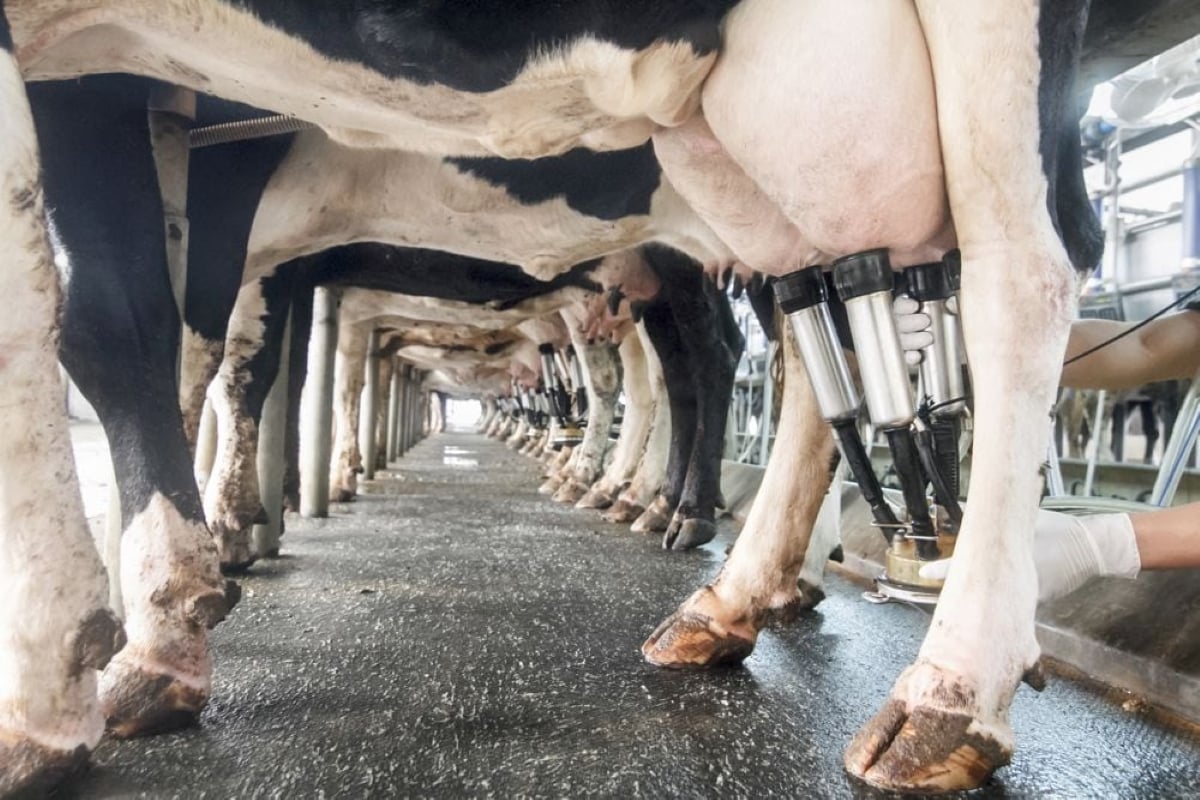WINNIPEG — Like many crops this year, chickpeas had a somewhat delayed seeding process due to a late spring and wet soil conditions, but crops are still looking good despite the delays.
“The seeding dates for chickpeas going in were less than ideal,” said Colin Young, the owner of Midwest Investments, a processing company in Moose Jaw, Sask., that is dedicated entirely to chickpeas.
“However, the crops are all up and looking great. Most producers have just completed their first half of disease control for spring or they’re just about to.”
Read Also

Farm gate milk price to rise in 2026
The Canadian Dairy Commission will raise its farm gate milk price by 2.3255 per cent in February, the Crown corporation announced on Friday.
The late seeding date does not mean that the crop cannot yet be redeemed this year, he says.
“As important as the seeding date is, September is everything in terms of the chickpea crop,” said Young. “A good chickpea crop really relies on favourable weather conditions in September. Chickpeas need 120 frost-free days to mature.”
Young added that the really significant problem with chickpea production is to have damaging weather conditions during the growing season.
“The crop does heal, but it sets the crop back,” said Young. “So, for example, a hailstorm may come through and do a minimal amount of damage to the crop visibly, but it would extend the growing season by two weeks. A very typical scenario that has played out for chickpea producers is that they get some sort of damaging weather event in the middle of the growing season. The crop is delayed, and then we run into an issue with maturity in the fall.”
If producers have to push their harvest date back a few weeks, they run the risk of getting frost on their crop before the chickpea kernels matures, said Young. The ideal growing conditions for chickpeas would be a warm growing season and favourable September weather conditions. However, there are options to help producers if they end up with off-grade crops.
“We want producers to have No. 1 quality products to market, that’s our best case scenario,” said Young. “However, we have specifically geared our facility to be able to metabolize and handle the higher green percentage of crops. I’ve got good markets for off-grade, so a person can sort of retain some value for a production that isn’t No. 1.”
Currently, the kabuli variety of chickpeas holds the most acres in Canada, along with the newer variety known as orion. Young said the market for the desi variety of chickpeas in Canada is lacklustre.
While some producers had to rearrange their seeding intentions due to the late spring, Young said that for the most part, seeding went as planned for chickpeas.
“I think producers that have them penciled in, put them in the volume that they intended to,” said Young.
“But bear in mind that the chickpea acres are significantly reduced from last year. I always joke that the total production of chickpea acres is within one increment of acres planted. So it’s very hard to get a really accurate gauge on chickpeas planted because there’s so few.”
Statistics Canada March seeding intentions report had forecast chickpea acres in Canada at 100,000 in 2014-15, down 80,000 acres from the previous year. Statistics Canada will release an updated acreage projection June 27, based on a survey done June 10.













